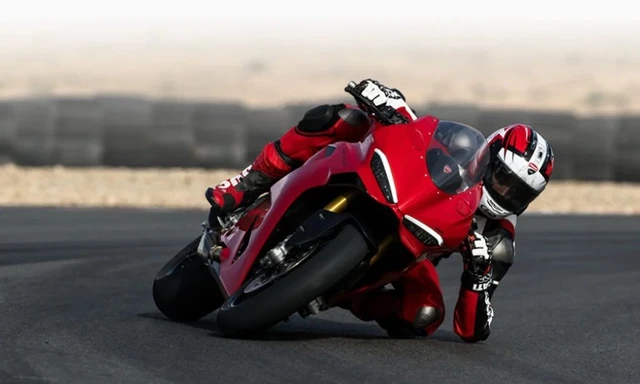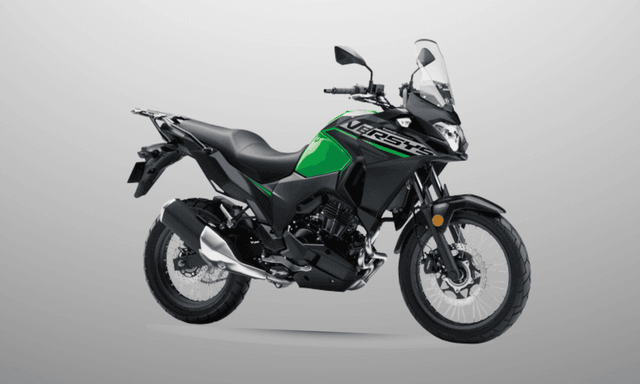Inside The Tesla Factory: Burning Cash, And Trying Not To Burn Out

At the Tesla Factory one day last week, the robotic city of Elon Musk's dreams looked like a madhouse, a tangle of red machines and car skeletons and industrial presses, firing welding sparks and pounding steel.
But the "controlled chaos" was a bit more relaxed than usual, insisted one Tesla official. The factory was still running through the night as part of a weeks-long sprint, but workers were finding a rhythm: One engineer said he even got a recent Sunday off.
Normal for the youngest, most erratic U.S. automaker has always looked like insanity anywhere else. The Silicon Valley giant on Wednesday will report earnings that analysts expect could include $900 million of losses in the second quarter, a time of factory disasters and internal paranoia that Musk, Tesla's billionaire chief, has described as "the most excruciating, hellish several months I've maybe ever had."
But as investors scrutinize how quickly cash is burning at Tesla, the ambitious $50 billion automaker that has not made a profit in 15 years, another risk is also becoming more apparent: whether the company's frenetic pace is leading to widespread burnout for Tesla employees - and, perhaps, even Musk himself.
The famously unpredictable company still has legions of fans and plenty of reasons to stay upbeat. Its newest car, the Model 3, has debuted to massive fanfare and raves from reviewers calling it a "modern marvel," "highway assassin" and "pure jungle cat." The company in early July celebrated a long-delayed production milestone, building 5,000 of the cars a week; sustained production could pleasantly surprise investors and, as Musk likes to say, prove the haters wrong.
Such quarterly earnings announcements are for most companies typically clinical affairs, but Tesla's are known for their fireworks. During the last call, in May, Musk berated analysts for asking questions he called "boring," "bonehead," "so dry" and "not cool." Tesla's stock this week is down 20 percent from its June peak.
Gene Munster, an analyst with Loup Ventures who said Musk's recent fights on Twitter had raised questions about his "maturity," wrote in a note to investors Monday that he expected "a more measured Elon Musk" on the upcoming earnings call. A repeat of Musk's last performance, he added, would mean "a material loss of investor confidence."
Tesla retains the ignoble honor of being the most shorted on Wall Street, with more investors betting against Musk's carmaker than any other company. Among them is Steve Eisman, whose bets against subprime mortgages were chronicled in "The Big Short" and who last week said of Musk: "Being smart's not enough. You've got to execute. And he's got execution problems."
The company, which said last quarter that it had about $3 billion of cash on hand, will have to pay off or refinance more than $1 billion in bond payments coming due over the next year. And over the past month, investors have raced to cash in on Tesla's potential doom, with surges in trading of credit default swaps - financial instruments that will pay out if Tesla fails to pay its debts.
Musk has pledged that Tesla will be profitable in the second half of the year if it can keep producing 5,000 Model 3 sedans a week. The carmaker hit that goal during a week-long manufacturing sprint in late June and is expected to tell shareholders Wednesday whether it kept the pace in recent weeks - a critical point that could in the long term decide whether Tesla lives or dies.
Tesla allowed Washington Post journalists last week to tour the factory, drive a Model 3 and partake in a few laps around its high-speed test track, where the cars are checked for noise, build precision and quality. Officials said Musk was visiting Tesla's Gigafactory battery plant in Nevada after several weeks at the Fremont factory and did not make him available for an interview, though they pointed to a small alcove at the center of the factory where they said he often retreats at night to sleep.
The 5 million-square-foot car plant in the industrial barrens outside Silicon Valley has become one of the world's most widely watched factories, in part because of Musk's promise that he would transform it into a hyper-automated "alien dreadnought" that he called the "machine that builds the machine."
Tesla's push to automate every finicky detail led to major delays - "Humans are underrated," Musk later admitted - and workers are now stationed on nearly every part of the production line. To reach its Model 3 production goal, Tesla resorted to relatively primitive measures, moving some production to a makeshift tent in the parking lot. (Officials did not allow reporters to view the tent.)
Even after that automating experiment backfired, the factory remains crowded with the red arms of high-powered German robots - 1,028 of which work on the Model 3 body line alone. Unlike in traditional auto plants, nearly a third of the robots hang from the ceiling, a space-saving move that has the effect of turning corners of the factory into caverns.
This "robot symphony," as one official calls it, turns giant rolls of aluminum into Model 3 skeletons, which dangle above the factory floor as they are welded, bolted and assembled with motors, seats and batteries. Along the way, scanner robots inspect components' precision down to the millimeter, craning a camera around every angle like the head of a curious bird.
For years, Musk promised the Model 3 would offer definitive proof that his luxury automaker could make cars for everyone, including a $35,000 mass-market sedan that would help wean the world off oil and look good doing it. But the cheapest models available now start at about $50,000 - selling the car now for its minimum price would, Musk tweeted, "cause Tesla to lose money & die" - meaning Tesla has remained what it has always been: a company that makes stylish cars for well-off people.
The big question for Tesla now is where it will find the money it needs to stay afloat. In the past, the company could raise as much money as it wanted, earning a market value higher than General Motors even as it claimed a fraction of the sales. But analysts say investors are starting to value Tesla not as an insurgent tech visionary but as a car company with three expensive products, a volatile factory and a limited fan base.
Musk says the company will not need to raise more money, and he has laughed off the idea of financial doomsday, tweeting a fake press release on April Fools' Day that said Tesla had gone "so bankrupt you can't believe it." But in recent months the company has laid off 9 percent of its workforce and has lost dozens of high-ranking sales, service and engineering executives.
Tesla also recently took the unconventional step of asking some suppliers to refund money it had already paid them for parts, as first reported by the Wall Street Journal. The company defended the request as a standard negotiation tool used to boost cash flow and "improve our competitive advantage."
As Tesla's turmoil has grown, so, too, have the fights among its fans and detractors, whose unique polarization is more akin to political parties than companies. Musk has not hesitated to punch back at investors, journalists and anyone else who criticizes him.
An anonymous blogger critical of Tesla, known as "Montana Skeptic," said last week that Musk had called his employer to complain, sparking outrage over what some said was Musk's campaign to silence his critics. Tesla said that the man's employer is a "longtime Tesla supporter" and that when the company "became aware" of the blogger's actions, he "volunteered to stop."
In a set of since-deleted 4 a.m. tweets, Musk seemed to take a victory lap, posting a photo of singer Miley Cyrus (the former "Hannah Montana") and suggesting the blogger's pseudonym was "a girls name."
Trapped in the center of these battles have been Tesla's thousands of rank-and-file employees, who have been pushed to fulfill ever-climbing demands during what Musk has called "production hell." Musk, a famous workaholic, said at the company's annual shareholder meeting in June that some employees had "worked 60 days straight."
Tesla has for years exerted a magnetic pull on Silicon Valley's ambitious workforce, and employees at the factory said they felt the company gave them a freedom to try new things that other process-driven automakers might not. But some workers during the factory tour acknowledged that, even for high-achievers, "Tesla has a way of wearing people out," as one employee put it.
Asked about his work hours, one engineer who helped design the Model 3's chassis instead gave his nonworking time - 7 to 9 p.m. - adding, "I've been 24/7 since the day I started." The company required, as a condition of the tour, that The Post not identify workers by name.
Another engineer working on automotive noise and vibration said he had quit in 2015 because of a mix of "ridiculous hours," the birth of his child and a "very bad conversation with Elon" but returned after a year because he said the job made him feel "empowered" to fix big problems and change the world. (Tesla later characterized his conversation with Musk not as bad but "intense.")
He tells his team now that "everybody should have more work than they can do, all the time, because that's how Tesla works," though he adds that it is their job to find a way to manage those ever-growing demands. "If you don't reach that point, this place will steamroll you," he said.
Cruising off the test track after a reporter ride-along, the engineer laughed and said hey to a passing driver - one of his employees who, having suffered his own massive burnout, had just returned from a six-month break. He smiled as he steered a Model 3 onto the test track, and within a few seconds he disappeared.
(This story has not been edited by NDTV staff and is auto-generated from a syndicated feed.)
Trending News
 1 min readTriumph Tracker 400 Unveiled in UK
1 min readTriumph Tracker 400 Unveiled in UK
Latest News
 Carandbike Team | Dec 17, 20252025 Ducati Panigale V2, Streetfighter V2 Recalled In The USThe recall states that two ABS fuses may have been inadvertently fitted in the wrong positions during wiring assembly and could increase the risk of a crash.1 min read
Carandbike Team | Dec 17, 20252025 Ducati Panigale V2, Streetfighter V2 Recalled In The USThe recall states that two ABS fuses may have been inadvertently fitted in the wrong positions during wiring assembly and could increase the risk of a crash.1 min read Jafar Rizvi | Dec 17, 2025Updated Bajaj Pulsar 220F Does Not Get Dual-Channel ABS; Company Issues ClarificationBajaj Auto has confirmed that the updated Pulsar 220F does not feature dual-channel ABS, contradicting earlier reports.1 min read
Jafar Rizvi | Dec 17, 2025Updated Bajaj Pulsar 220F Does Not Get Dual-Channel ABS; Company Issues ClarificationBajaj Auto has confirmed that the updated Pulsar 220F does not feature dual-channel ABS, contradicting earlier reports.1 min read Janak Sorap | Dec 16, 2025Triumph Tracker 400 Unveiled in UKBased on the Speed 400’s platform with the tune from the Thruxton 400.1 min read
Janak Sorap | Dec 16, 2025Triumph Tracker 400 Unveiled in UKBased on the Speed 400’s platform with the tune from the Thruxton 400.1 min read car&bike Team | Dec 16, 2025Kawasaki Versys-X 300 Offered With Rs 25,000 DiscountAfter the discount, the entry-level Kawasaki Adventurer tourer is priced at Rs 3.24 lakh (ex-showroom).3 mins read
car&bike Team | Dec 16, 2025Kawasaki Versys-X 300 Offered With Rs 25,000 DiscountAfter the discount, the entry-level Kawasaki Adventurer tourer is priced at Rs 3.24 lakh (ex-showroom).3 mins read car&bike Team | Dec 16, 20252026 MG Hector Prices, Variant-Wise Features ExplainedThe updated Hector is sold in 5 trim levels - Style, Select Pro, Smart Pro, Sharp Pro, Savvy Pro.2 mins read
car&bike Team | Dec 16, 20252026 MG Hector Prices, Variant-Wise Features ExplainedThe updated Hector is sold in 5 trim levels - Style, Select Pro, Smart Pro, Sharp Pro, Savvy Pro.2 mins read Janak Sorap | Dec 16, 2025Yamaha R3 and MT-03 Discontinued in India; Here’s WhyThe motorcycles had revied around a price revision of more than a lakh earlier this year, followed by additional discounts due to GST reform, and yet have failed to secure any momentum.1 min read
Janak Sorap | Dec 16, 2025Yamaha R3 and MT-03 Discontinued in India; Here’s WhyThe motorcycles had revied around a price revision of more than a lakh earlier this year, followed by additional discounts due to GST reform, and yet have failed to secure any momentum.1 min read
 Janak Sorap | Dec 11, 2025Harley-Davidson X440 T First Ride Review: Smarter and SharperHarley-Davidson has taken the X440 and given it a more focused and engaging twist. The result is the X440 T—essentially the same platform but updated in areas that give the motorcycle more appeal and riders more thrill.5 mins read
Janak Sorap | Dec 11, 2025Harley-Davidson X440 T First Ride Review: Smarter and SharperHarley-Davidson has taken the X440 and given it a more focused and engaging twist. The result is the X440 T—essentially the same platform but updated in areas that give the motorcycle more appeal and riders more thrill.5 mins read Shams Raza Naqvi | Dec 10, 20252025 Mini Cooper Convertible Review: More Colour On Indian RoadsThe updated Mini Cooper Convertible is set to be launched in the Indian market in the next few days. We drive it around Jaisalmer for a quick review.1 min read
Shams Raza Naqvi | Dec 10, 20252025 Mini Cooper Convertible Review: More Colour On Indian RoadsThe updated Mini Cooper Convertible is set to be launched in the Indian market in the next few days. We drive it around Jaisalmer for a quick review.1 min read Bilal Firfiray | Dec 8, 2025Tata Sierra Review: India’s New Favourite?Marking its return after a few decades, the reborn Sierra has made everyone sit up and take notice. But is it worth the hype?10 mins read
Bilal Firfiray | Dec 8, 2025Tata Sierra Review: India’s New Favourite?Marking its return after a few decades, the reborn Sierra has made everyone sit up and take notice. But is it worth the hype?10 mins read Girish Karkera | Dec 4, 20252026 Honda Prelude First Drive: Domesticated Civic Type RA sporty-looking coupe built to give customers a taste of performance but not at the expense of everyday practicality.5 mins read
Girish Karkera | Dec 4, 20252026 Honda Prelude First Drive: Domesticated Civic Type RA sporty-looking coupe built to give customers a taste of performance but not at the expense of everyday practicality.5 mins read Seshan Vijayraghvan | Nov 29, 2025Mahindra XEV 9S First Drive Review: Big Electric SUV, Bigger ExpectationsThe XEV 9S lands at a time when the EV crowd is growing fast. It’s a big, born-electric, three-row SUV that starts under 20 lakh. It sits close to the XUV700 in size, but the brief is very different. Here’s what it’s like on the road.11 mins read
Seshan Vijayraghvan | Nov 29, 2025Mahindra XEV 9S First Drive Review: Big Electric SUV, Bigger ExpectationsThe XEV 9S lands at a time when the EV crowd is growing fast. It’s a big, born-electric, three-row SUV that starts under 20 lakh. It sits close to the XUV700 in size, but the brief is very different. Here’s what it’s like on the road.11 mins read































































































































